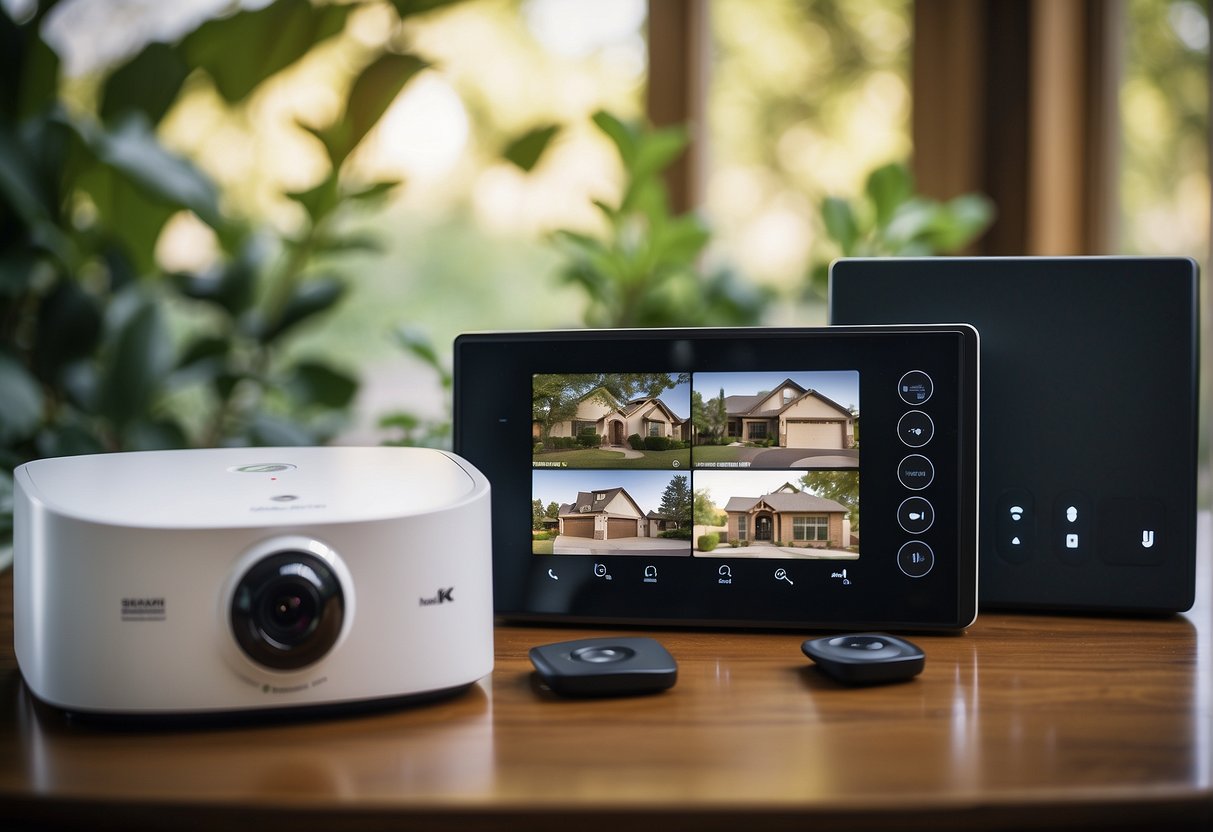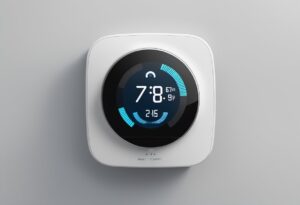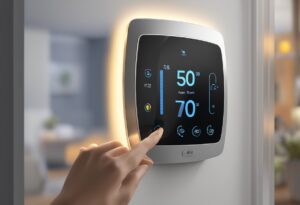Self-monitored home security systems with cameras are becoming increasingly popular as homeowners seek to protect their property and loved ones without paying a monthly fee.
With the rise of smart home technology, it’s now possible to install a self-monitored security system that can be controlled from your smartphone or tablet, allowing you to keep an eye on your home at all times.
When choosing a self-monitored home security system with cameras, there are several key features to consider.
These include the quality of the cameras, the range of the system, the ease of installation, and the level of customer support provided by the manufacturer.
It’s also important to consider whether the system is compatible with other smart home devices, such as smart locks and voice assistants.
To help you make the right choice, we’ve researched and tested some of the top self-monitored home security systems with cameras on the market.
Our top picks offer a range of features and benefits, from high-quality cameras and easy installation to reliable customer support and compatibility with other smart home devices.
So whether you’re looking for a basic system to monitor your front door or a more advanced system to protect your entire home, we’ve got you covered.
Key Takeaways
- Self-monitored home security systems with cameras are becoming increasingly popular among homeowners who want to protect their property and loved ones without paying a monthly fee.
- When choosing a self-monitored home security system with cameras, it’s important to consider key features such as camera quality, range, ease of installation, and compatibility with other smart home devices.
- Our top picks for self-monitored home security systems with cameras offer a range of features and benefits, from high-quality cameras and easy installation to reliable customer support and compatibility with other smart home devices.
Understanding Self-Monitored Home Security Systems
Self-monitored home security systems are becoming increasingly popular among homeowners.
These systems are designed to provide homeowners with a sense of security without the need for a professional monitoring service.
Self-monitored systems are typically more affordable than traditional monitored systems and offer a range of features that can be customized to meet the needs of individual homeowners.
Benefits of a Self-Monitored System
One of the primary benefits of a self-monitored system is the ability to monitor your home from anywhere, at any time.
Most self-monitored systems come with cameras, sensors, and alarms that can be accessed remotely using a smartphone or tablet.
This allows homeowners to keep an eye on their homes while they are away, ensuring that their property and loved ones are safe and secure.
Another benefit of self-monitored systems is their flexibility.
Homeowners can choose the specific features they need, including cameras, sensors, and smart home devices, and customize their system to meet their unique needs.
This allows homeowners to create a system that is tailored to their lifestyle and preferences.
How Self-Monitoring Works
Self-monitoring systems typically consist of cameras, sensors, and alarms that are connected to a central hub.
The hub is connected to the homeowner’s Wi-Fi network and can be accessed remotely using a smartphone or tablet.
When the system detects motion or other activity, it sends an alert to the homeowner’s device, allowing them to view live footage of their home and take appropriate action if necessary.
Some self-monitored systems also come with smart home devices, such as smart locks and smart thermostats, which can be controlled remotely using a smartphone or tablet.
This allows homeowners to manage their home’s security and energy usage from anywhere, at any time.
Key Features to Consider

When looking for the best self-monitored home security system with cameras, there are several key features to consider.
Camera Quality and Storage Options
The quality of the camera and the storage options available are important factors to consider when choosing a self-monitored home security system.
Look for a system that provides high-quality video and real-time video streaming.
Additionally, consider the storage options available, such as video storage and cloud storage, to ensure that you can access your footage when you need it.
Smart Home Integration
Home automation is becoming increasingly popular, and many self-monitored home security systems offer smart home integration.
This feature allows you to control your security system using voice commands or a mobile app.
Look for a system that is compatible with your existing smart home devices and offers seamless integration.
Ease of Installation and Use
DIY installation is a popular option for self-monitored home security systems.
When choosing a system, look for one that is easy to install and use.
Consider the availability of mobile apps and smartphone apps to ensure that you can monitor your home security system from anywhere.
Top Picks for Self-Monitored Security Systems

When it comes to self-monitored home security systems with cameras, there are several options available in the market. Here are some top picks for self-monitored security systems that offer reliable security solutions and advanced features.
Affordable Options
- Ring: Ring is a popular self-monitored home security system that offers affordable equipment packages and no monthly fees.
The system comes with a doorbell camera, indoor/outdoor cameras, and a base station that acts as a hub for all devices.
Ring also offers advanced object detection, which can detect the presence of people, animals, and vehicles.
- SimpliSafe: SimpliSafe is another affordable option for self-monitored home security systems.
The system comes with a base station, wireless keypad, door/window sensors, and a motion sensor.
SimpliSafe also offers advanced features like a smart lock, temperature sensor, and water sensor.
- Wyze: Wyze is a budget-friendly self-monitored home security system that offers a range of affordable cameras and sensors.
The system comes with a base station, motion sensor, door/window sensor, and a range of indoor/outdoor cameras.
Wyze also offers advanced features like person detection, facial recognition, and pet detection.
Systems with Advanced Features
- Abode: Abode is a self-monitored home security system that offers advanced features like facial recognition, voice control, and geolocation.
The system comes with a base station, door/window sensors, motion sensors, and a range of indoor/outdoor cameras.
Abode also offers a range of smart home integrations, including Alexa, Google Assistant, and Apple HomeKit.
- Arlo: Arlo is a self-monitored home security system that offers advanced features like 4K video, HDR, and advanced object detection.
The system comes with a range of indoor/outdoor cameras, doorbell cameras, and a base station that acts as a hub for all devices.
Arlo also offers a range of smart home integrations, including Alexa, Google Assistant, and Apple HomeKit.
- Vivint: Vivint is a self-monitored home security system that offers advanced features like facial recognition, voice control, and geolocation.
The system comes with a base station, door/window sensors, motion sensors, and a range of indoor/outdoor cameras.
Vivint also offers a range of smart home integrations, including Alexa, Google Assistant, and Apple HomeKit.
Making the Right Choice

When it comes to choosing a self-monitored home security system with cameras, there are several factors to consider. Here are some key points to keep in mind when making your decision.
Comparing Costs and Value
One of the most important considerations when choosing a self-monitored home security system with cameras is the cost.
While some systems may seem affordable at first glance, it’s important to consider the long-term value of the system as well.
Some systems may require costly equipment or monthly fees, while others may offer optional professional monitoring at an additional cost.
It’s also important to consider the features included in the system.
Some systems may offer advanced features like facial recognition or smart home integration, while others may offer more basic functionality.
It’s important to choose a system that meets your specific needs, without overpaying for features you don’t need.
Considering Long-Term Commitments
Another important factor to consider when choosing a self-monitored home security system with cameras is the length of the commitment.
Some systems may require lengthy contracts or may not offer a trial period, which can make it difficult to switch to a different system if you’re not satisfied.
It’s important to choose a system that offers a flexible commitment, with the option to cancel or change your plan if needed.
Additionally, some systems may offer free self-monitoring, which can be a great option for those who want to try out a system before committing to a paid plan.
Ultimately, the right self-monitored home security system with cameras will depend on your specific needs and budget.
By carefully considering your options and weighing the costs and benefits of each system, you can choose a system that provides the best value and protection for your home.



